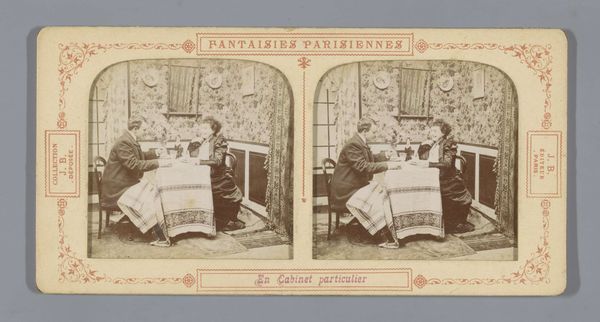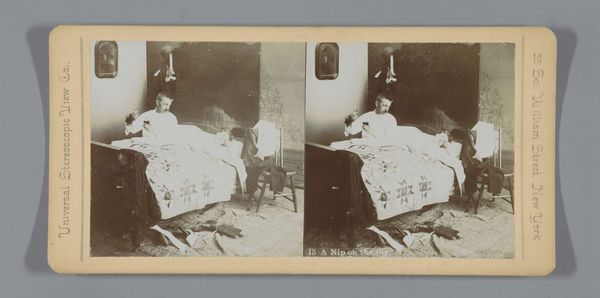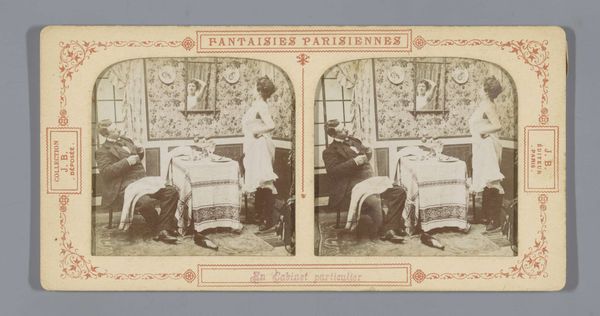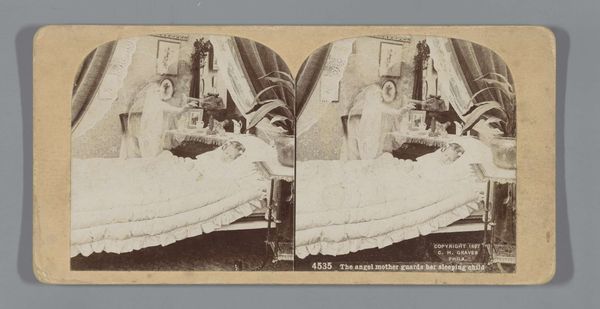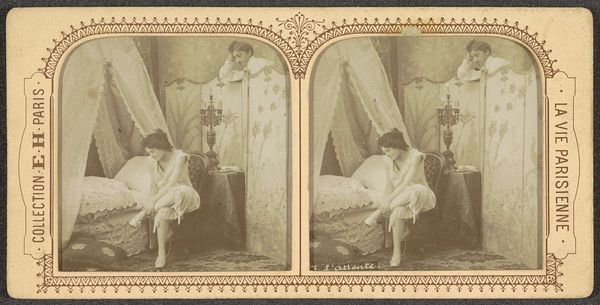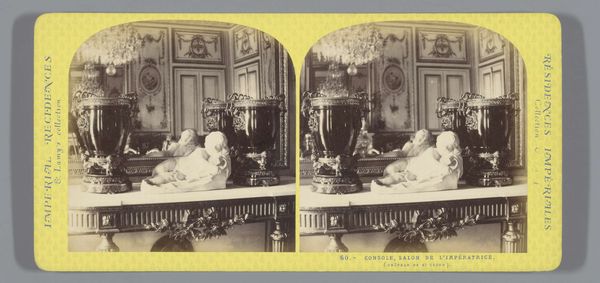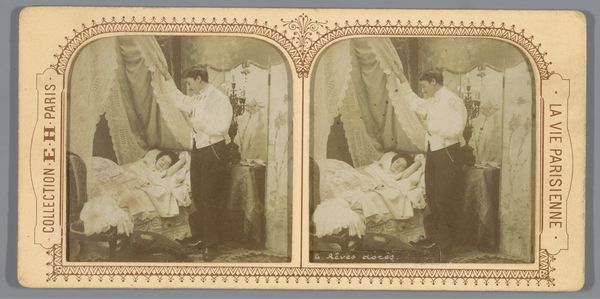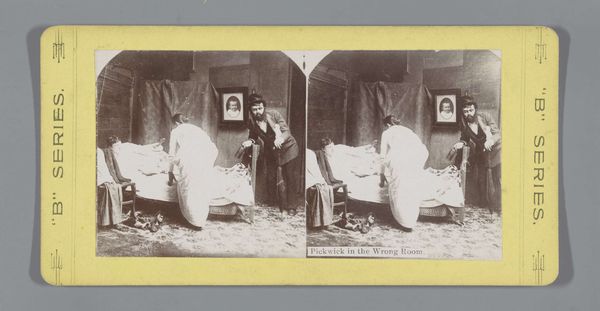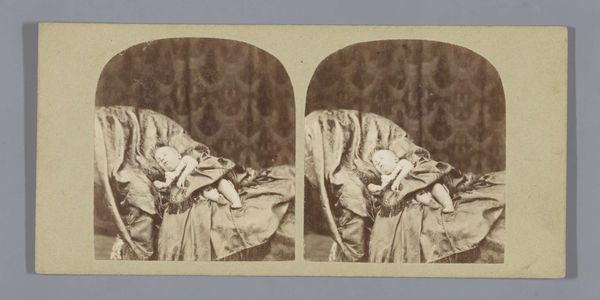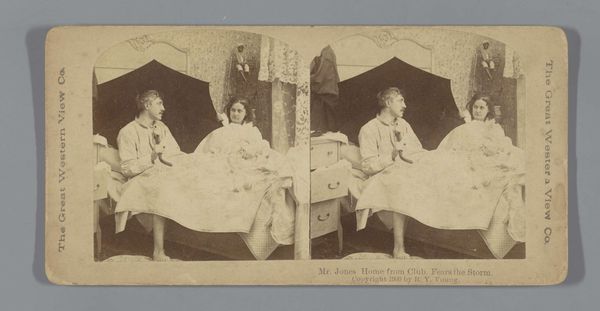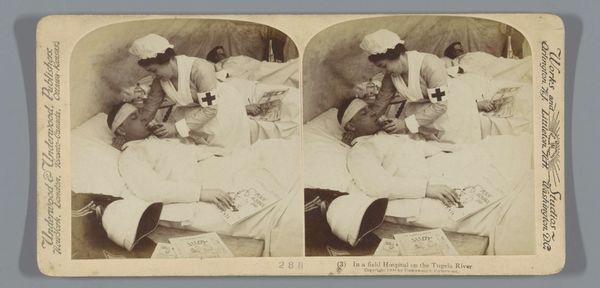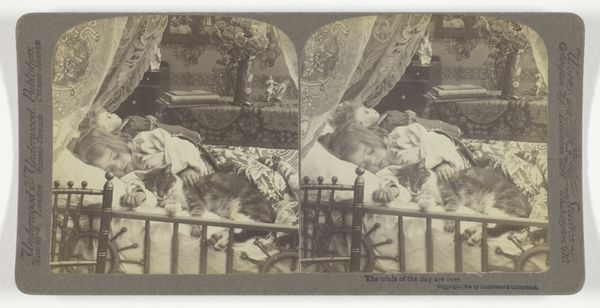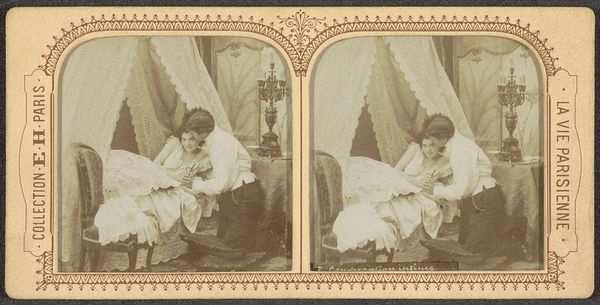
print, photography, albumen-print
# print
#
photography
#
genre-painting
#
erotic-art
#
albumen-print
Dimensions: height 88 mm, width 174 mm
Copyright: Rijks Museum: Open Domain
Curator: This albumen print, a photographic work entitled "Man en vrouw proosten tijdens een maaltijd," or "Man and woman toasting during a meal," comes to us from around 1855-1875, created by an anonymous artist. Its format, notably, is that of a stereoscopic card, popular at the time. What are your first thoughts? Editor: It's unsettling. The seediness is almost palpable—the scattered clothes, the woman’s pose, and the way the man is eyeing her glass feels heavy with unspoken power dynamics. Curator: Yes, that unsettling feeling might come from a reading of symbolic elements here. We have the toast, typically associated with celebration and unity, here tainted by what you point out is a power imbalance. The act of sharing a drink carries symbolic weight, particularly concerning social contracts. Is it complicity, entrapment, or an uneven distribution of influence? Editor: The title “Parisian Fantasies,” visible on the card itself, tells us everything we need to know, I think. This wasn't meant as an innocent genre scene. This image exploits and commodifies a fantasy that hinges on gender and class inequalities. This wasn't displayed in the home. Curator: Consider also the enclosed space—the composition confines the figures, heightening the tension. We observe this “private room,” implied also in the lettering "En Cabinet particulier," which reinforces themes of exclusion and secrecy. This can elicit voyeuristic interest on one hand, and discomfort regarding personal transgression on the other. The artist's anonymity seems complicit, and so viewers find themselves asking questions of their own ethics. Editor: Right, it pushes us to confront uncomfortable questions about ourselves and our complicity in systems of objectification. How the consumption and distribution of images can have political consequences. I would add that the woman’s somewhat blurred form—suggesting the photographer made sure not to focus on her—reminds us she's just one figure in the broader political economy of looking. Curator: Such art speaks to a broader anxiety of modern life and transformation, especially given the rapid technological changes associated with early photography and its use. So a work like this really highlights both the past it's representing, as well as our complex relationships with history and its reverberations through symbolism. Editor: Ultimately, by acknowledging this photograph’s problematic undercurrents, we become better equipped to tackle harmful societal patterns today.
Comments
No comments
Be the first to comment and join the conversation on the ultimate creative platform.
